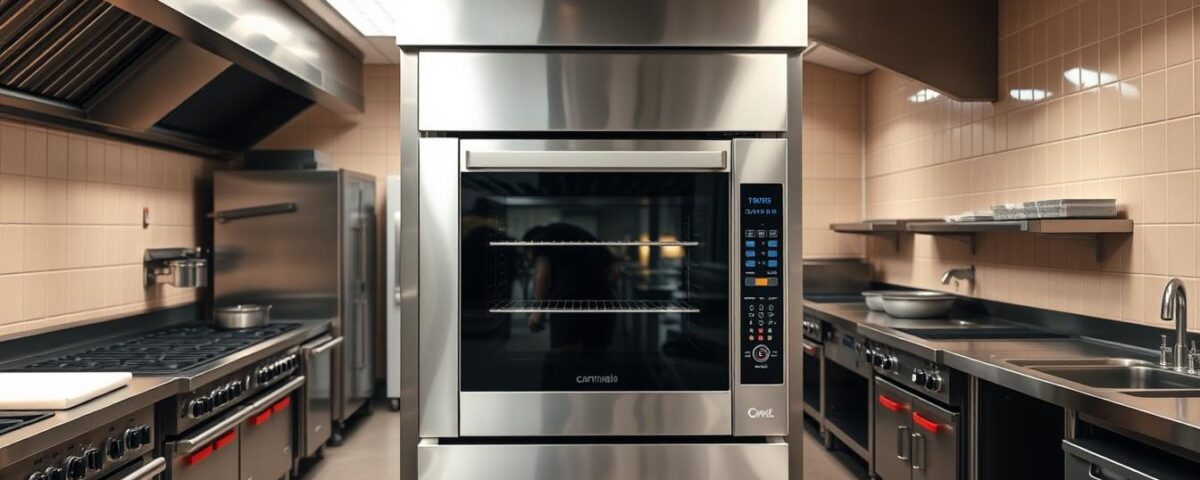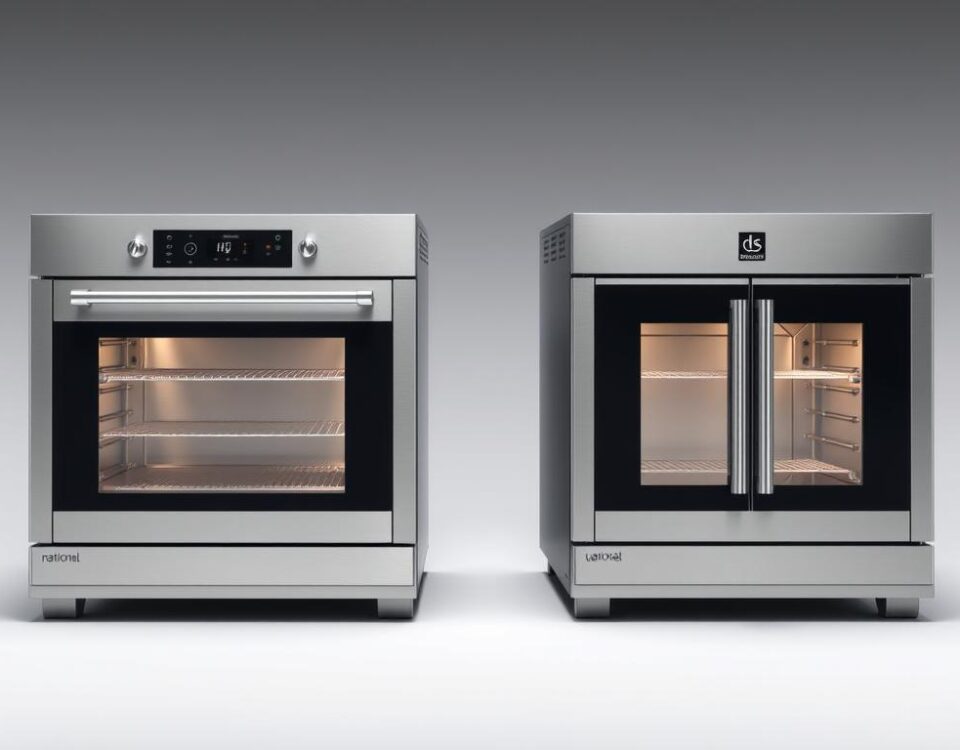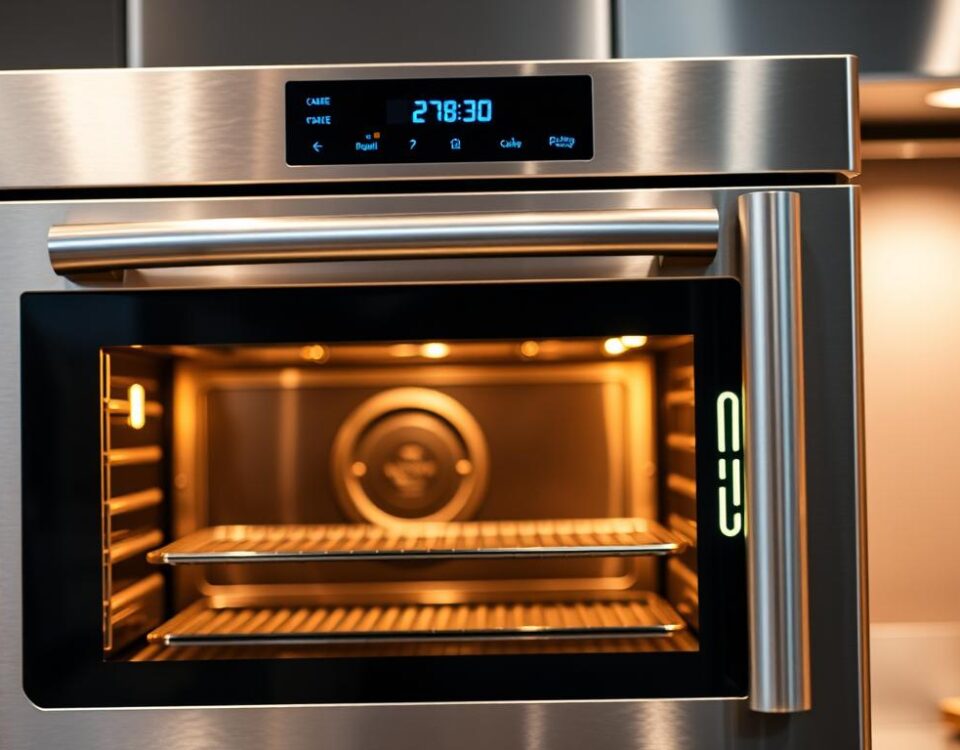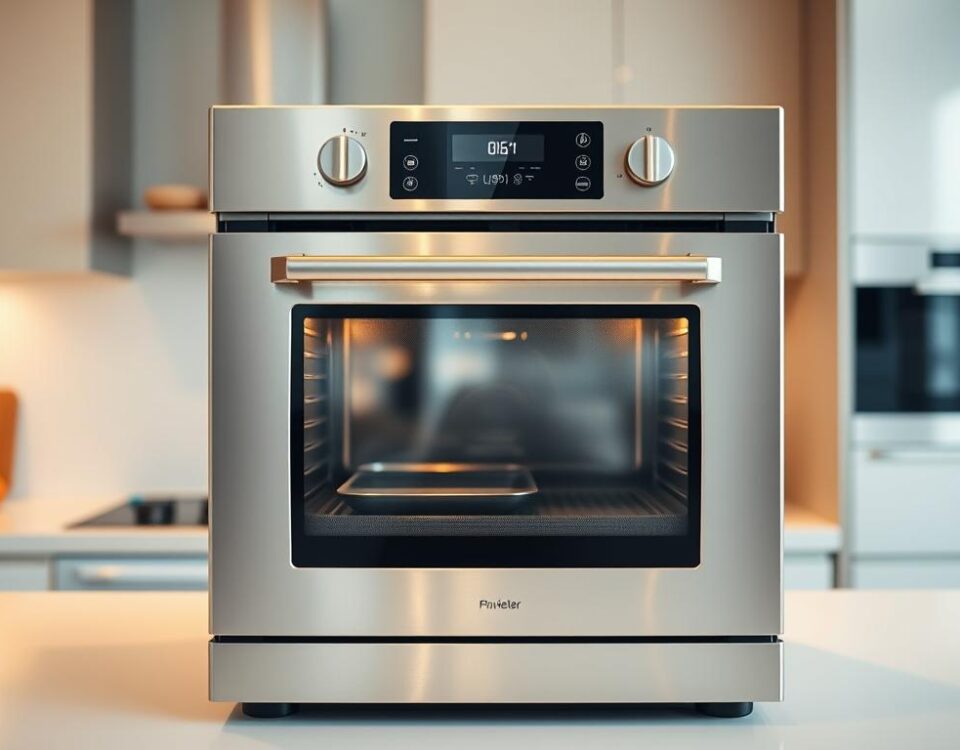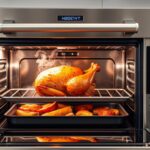
4 Mistakes When Switching from Conventional to Convection Ovens
September 24, 2025
I Tried a Combi Oven for 30 Days—Here Are the Results
September 24, 2025As a kitchen owner, you’re likely no stranger to the challenges of optimizing your cooking equipment. I recall a busy restaurant that struggled with inefficient cooking methods, only to discover the versatility of combi ovens. These units combine pressureless steam, convected heat, and a combination of both, revolutionizing their kitchen operations.
Did you know that commercial kitchens can save up to 30% on energy costs by choosing the right cooking equipment? With the rising costs of energy and the increasing demand for efficient kitchen operations, understanding the profitability of combi ovens is crucial. Will electric or gas ovens prove more profitable in 2025?
Key Takeaways
- Understand the initial purchase costs and long-term value of combi ovens.
- Learn how to determine the best type of combi oven for your business needs.
- Discover the real costs of ownership beyond the purchase price.
- Explore how combi ovens can save storage space in your kitchen.
- Find out which energy source is more profitable for your combi oven.
Understanding Combi Ovens and Their Value
Understanding the value of combi ovens is crucial for any business looking to upgrade its cooking capabilities. Combi ovens are not just another kitchen appliance; they are a versatile cooking solution that combines the benefits of convection cooking, steam cooking, and a combination of both.
What Makes Combi Ovens Unique
What sets combi ovens apart is their ability to perform multiple cooking tasks in one unit. This is achieved through three primary cooking modes: convection, steam, and combination cooking. The convection mode uses dry heat and fans to circulate hot air, ideal for baking, roasting, and browning foods.
The Three-in-One Cooking Functionality
The three-in-one functionality of combi ovens allows for a wide range of cooking techniques. The steam mode maintains food moisture and nutrients, making it perfect for delicate items like fish and vegetables. The combination mode merges convection and steam cooking for optimal results with foods that benefit from both methods, such as roasts.
| Cooking Mode | Description | Ideal For |
|---|---|---|
| Convection | Dry heat with circulating hot air | Baking, roasting, browning |
| Steam | Maintains moisture and nutrients | Delicate fish, vegetables, custards |
| Combination | Merges convection and steam | Roasts, foods needing both methods |
The Current Combi Oven Market in 2025
The combi oven market in 2025 is witnessing significant shifts in pricing and technology. As businesses look to invest in commercial cooking equipment, understanding the current market trends is crucial.
Market Trends and Innovations
The combi oven market is evolving with advancements in technology, offering more efficient and versatile cooking solutions. Innovations in energy efficiency and cooking precision are driving the demand for both electric and gas combi ovens. Suppliers are now offering free shipping on many models, making it easier for businesses to acquire the equipment they need.
Price Ranges to Expect
Entry-level electric combi ovens, such as the Tecnoeka MKFA series, start around $4,900. Mid-range options from Unox and Atosa range from $6,000 to $10,000, while premium selections from Rational and Electrolux can cost $11,000 to $13,000. The size of the oven significantly impacts the price, with full-size commercial models costing more than half-size units. Gas combi ovens typically command a premium of 15-20% over comparable electric models.
Electric Combi Ovens: A Comprehensive Cost Analysis
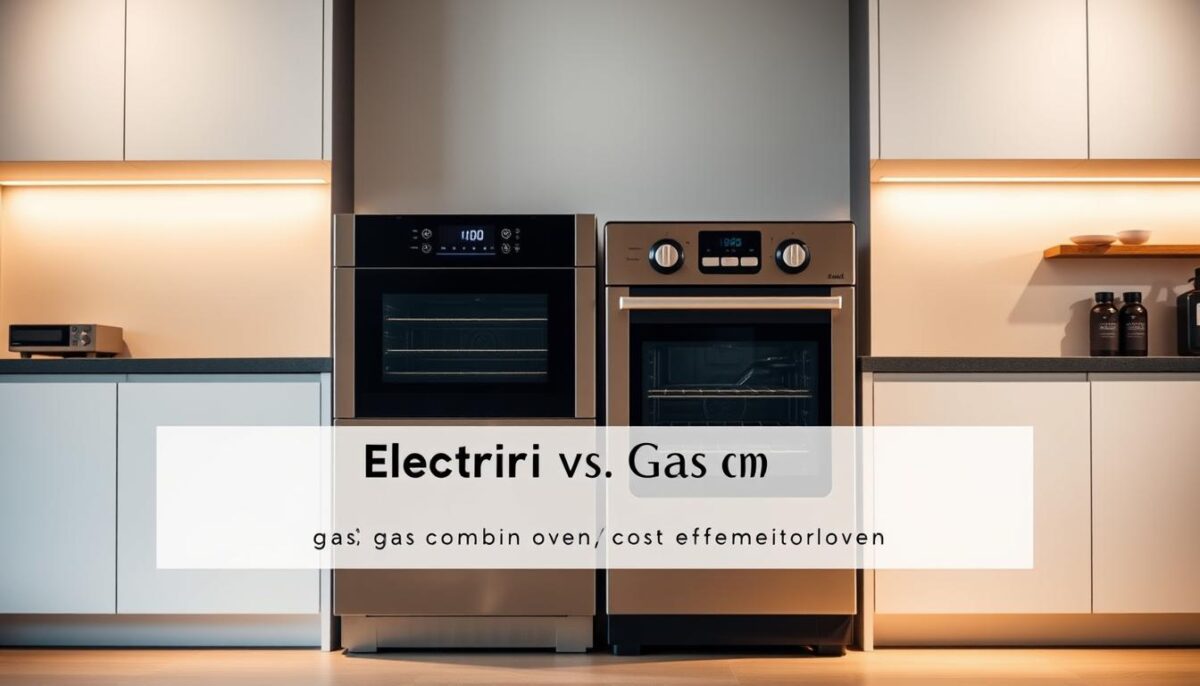
The total cost of owning an electric combi oven involves several factors, including purchase, installation, and operational expenses. To make an informed decision, it’s crucial to analyze these costs comprehensively.
Initial Purchase Costs
The initial purchase cost of an electric combi oven can vary significantly based on the brand, model, and features. For instance, high-end models with advanced features like smart cooking programs are more expensive.
Installation Requirements and Expenses
Installation costs for electric combi ovens are generally lower compared to gas models, as they don’t require complex venting systems. However, ensuring the electrical infrastructure can support the oven’s power requirements is essential.
Operational Costs and Energy Consumption
Electric combi ovens typically consume between 10-15 kWh during active cooking sessions. Energy-efficient models with Energy Star ratings can reduce consumption by 20-30%. Operational costs vary by region, with average commercial electricity rates ranging from $0.10-$0.20 per kWh.
Gas Combi Ovens: Breaking Down the Expenses
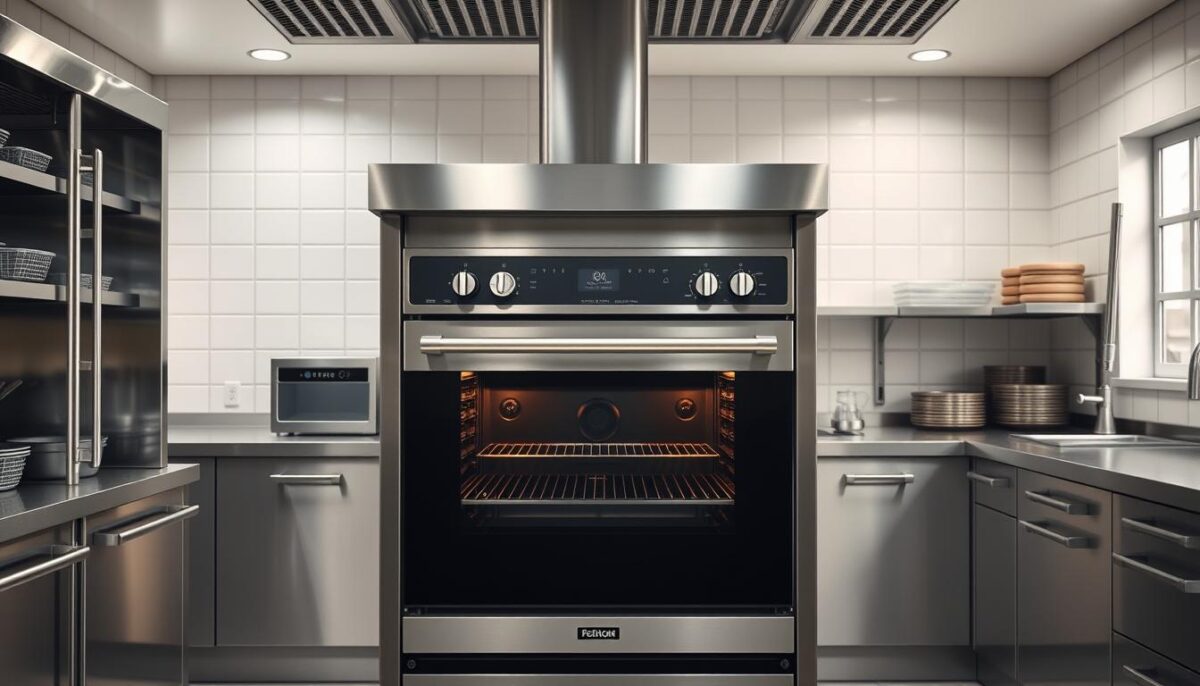
The cost of operating a gas combi oven can vary widely based on several key factors, including regional gas prices and oven efficiency. Understanding these expenses is crucial for businesses looking to invest in this versatile cooking solution.
Upfront Investment Considerations
The initial purchase price of a gas combi oven is typically higher than that of electric models. However, the long-term operational savings can offset this initial investment. When evaluating upfront costs, consider the oven’s capacity, features, and brand reputation.
Installation Complexities and Costs
Installing a gas combi oven requires professional expertise due to the need for gas line connections and proper ventilation. The complexity of the installation can impact the overall cost, with factors such as kitchen layout and existing infrastructure playing a significant role.
Running Costs and Fuel Efficiency
Gas combi ovens are known for their operational efficiency, particularly in regions with favorable natural gas prices. On average, commercial gas rates range from $0.60-$1.20 per therm, with typical combi ovens consuming 1-2 therms per hour during active cooking. This results in hourly operational costs of $0.60-$2.40, often lower than comparable electric models.
The direct heat transfer of gas models provides faster temperature recovery and potentially shorter cooking times, leading to operational savings. Regional utility price differences can dramatically impact the cost comparison, with gas having a significant advantage in areas with low natural gas rates.
Modern gas combi ovens have improved fuel efficiency through better burner design and insulation, reducing consumption by up to 15% compared to older models. This enhancement not only lowers operational costs but also contributes to a more sustainable kitchen environment.
Combi Oven Cost Comparison: Electric vs. Gas
As businesses look to invest in combi ovens, comparing the total cost of ownership between electric and gas models becomes essential. This comparison is not just about the initial purchase price; it involves understanding various factors including operational costs, shipping expenses, and regional variations in utility rates.
Five-Year Total Cost of Ownership
When evaluating the total cost of ownership over a five-year period, both electric and gas combi ovens present different financial landscapes. Electric models typically have lower upfront costs but may incur higher operational expenses depending on the regional electricity rates. In contrast, gas combi ovens often come with higher initial investment but can offer savings in areas where natural gas is cheaper.
For instance, in regions like the Northeast and California, where electricity costs can range from $0.15 to $0.22 per kWh, gas combi ovens prove to be more economical in the long run despite their higher purchase price. Conversely, in the Midwest and Southern states where electricity rates are lower ($0.08-$0.12/kWh), electric combi ovens may offer better value over the five-year ownership period.
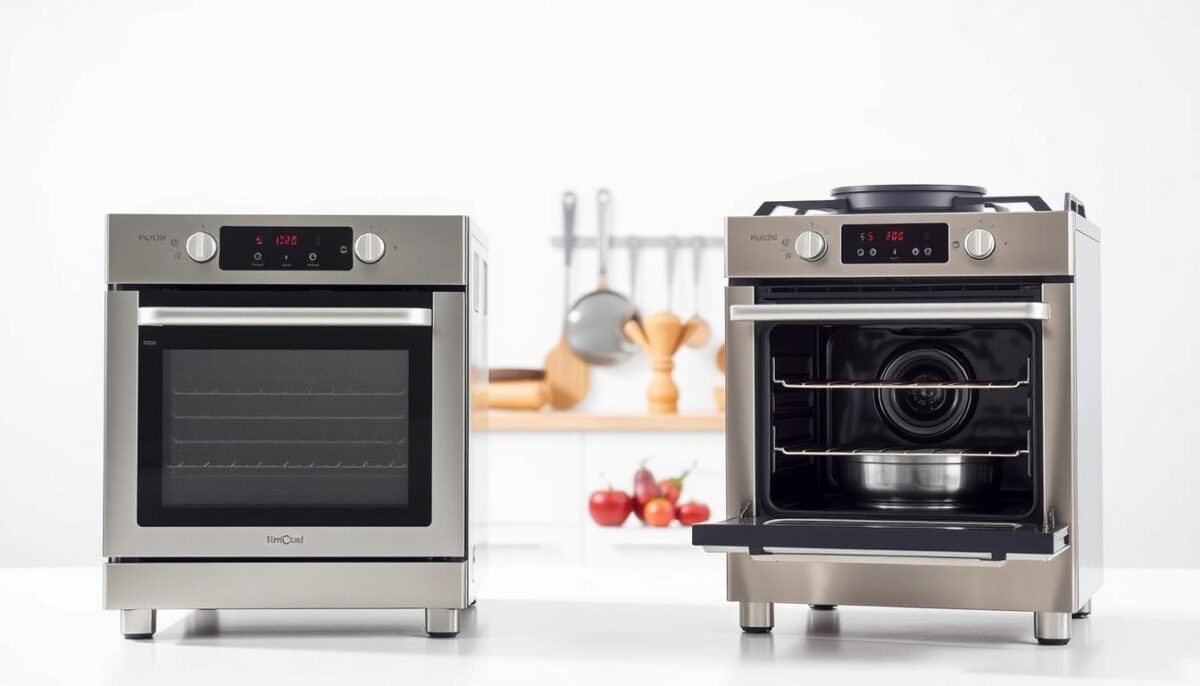
Regional Cost Variations Across the US
Regional differences play a significant role in determining the cost-effectiveness of electric versus gas combi ovens. The cost of utilities varies significantly across different parts of the United States, impacting the operational costs of these appliances. Additionally, shipping costs can vary based on the distance from distribution centers, with some suppliers offering free shipping nationwide while others charge between $500 to $1,500.
Furthermore, local rebate and incentive programs for energy-efficient equipment can dramatically alter the financial equation, potentially offsetting thousands of dollars in initial costs for qualifying models. Businesses must consider these regional variations and incentives when deciding between electric and gas combi ovens.
Performance Factors That Impact Profitability
When considering a combi oven for your business, understanding the performance factors that impact profitability is crucial. The right combi oven can significantly enhance your kitchen’s efficiency and product quality.
Cooking Speed and Output Capacity
Cooking speed and output capacity are critical factors that influence the profitability of a combi oven. A faster cooking speed allows for higher productivity, enabling your kitchen to handle more orders and increase revenue. The output capacity of a combi oven determines how much food you can prepare simultaneously, directly impacting your ability to meet customer demand during peak hours.
| Model | Cooking Speed | Output Capacity |
|---|---|---|
| Electric Combi | Fast | High |
| Gas Combi | Very Fast | Very High |
Temperature Control and Precision
Temperature control and precision are vital for achieving consistent cooking results, especially for temperature-sensitive dishes. Electric combi ovens generally offer more precise temperature control with fluctuations of ±2-3°F, while gas models typically have slightly wider temperature variations of ±5-7°F. Modern premium models of both types feature advanced control systems that minimize these differences.
Key Benefits of Precise Temperature Control:
- Consistent cooking results
- Reduced food waste
- Improved food quality
Energy Efficiency and Utility Savings
As we explore the world of combi ovens, energy efficiency becomes a crucial factor in determining the most cost-effective option for your business. The efficiency of these appliances not only impacts your utility bills but also affects your overall operational costs.
Electric Models: Efficiency Ratings and Features
Electric combi ovens have made significant strides in energy efficiency, with many models boasting high efficiency ratings. These ovens often feature advanced insulation, precise temperature controls, and optimized heating elements to minimize energy consumption. When selecting an electric combi oven, look for models with high energy efficiency ratings and features like automatic door closers to reduce heat loss.
Gas Models: Efficiency Innovations
Gas combi ovens have also seen significant efficiency improvements, particularly with the introduction of advanced burner designs that provide better heat distribution while reducing gas consumption. Modern gas models feature improved insulation, sealed combustion chambers, and precise gas flow controls that optimize fuel use. Some premium gas combi ovens now incorporate heat recovery systems that capture and reuse exhaust heat, improving overall efficiency by 10-15%. These innovations have narrowed the operational cost gap between gas and electric models, making gas more competitive in regions with higher electricity costs.
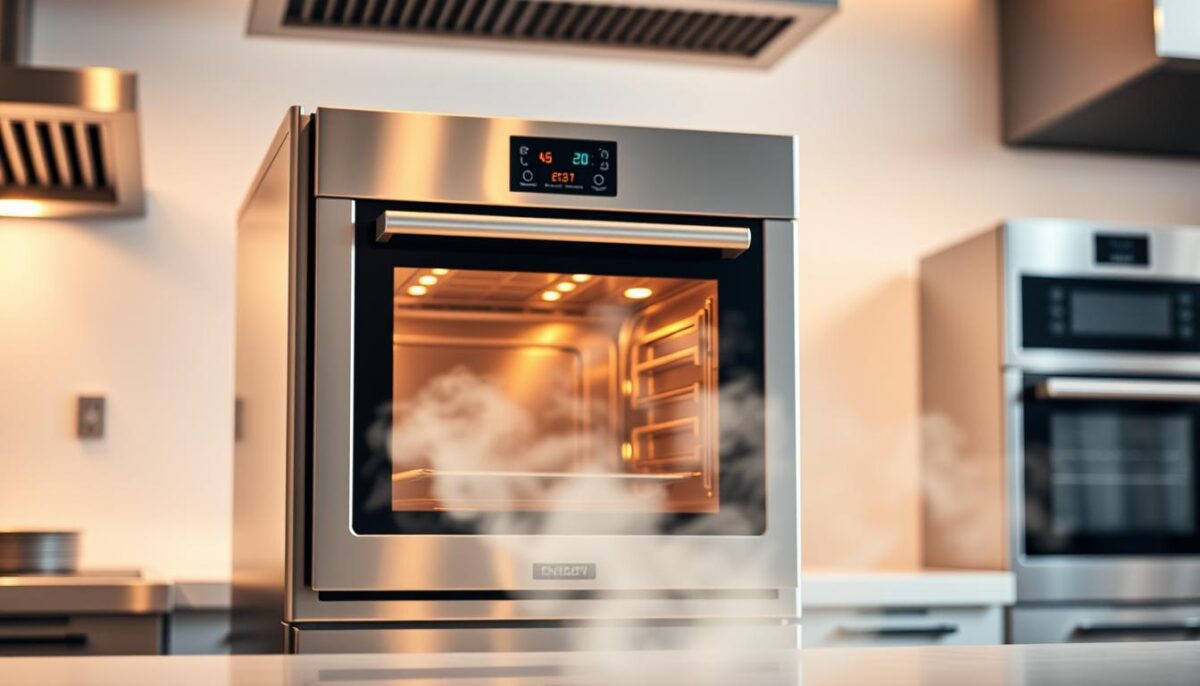
Maintenance Costs and Longevity Comparison
Understanding the maintenance needs of combi ovens is crucial for businesses looking to maximize their investment. Both electric and gas combi ovens have unique maintenance requirements that impact their longevity and overall cost of ownership.
Electric Combi Oven Maintenance Requirements
Electric combi ovens generally have fewer mechanical components than their gas counterparts, which can result in lower maintenance costs. However, their electronic controls and heating elements still require regular inspection and maintenance to ensure optimal performance. Annual maintenance checks can help identify potential issues before they become major problems.
Gas Combi Oven Service Needs
Gas combi ovens typically require more frequent maintenance checks, with recommended professional service 2-3 times annually, at a cost of $700-$1,200 per year. Critical maintenance tasks include burner inspection and cleaning, gas valve testing, flue examination, ignition system checks, and safety control verification. Proper maintenance is not just about performance but also safety, making regular service non-negotiable. 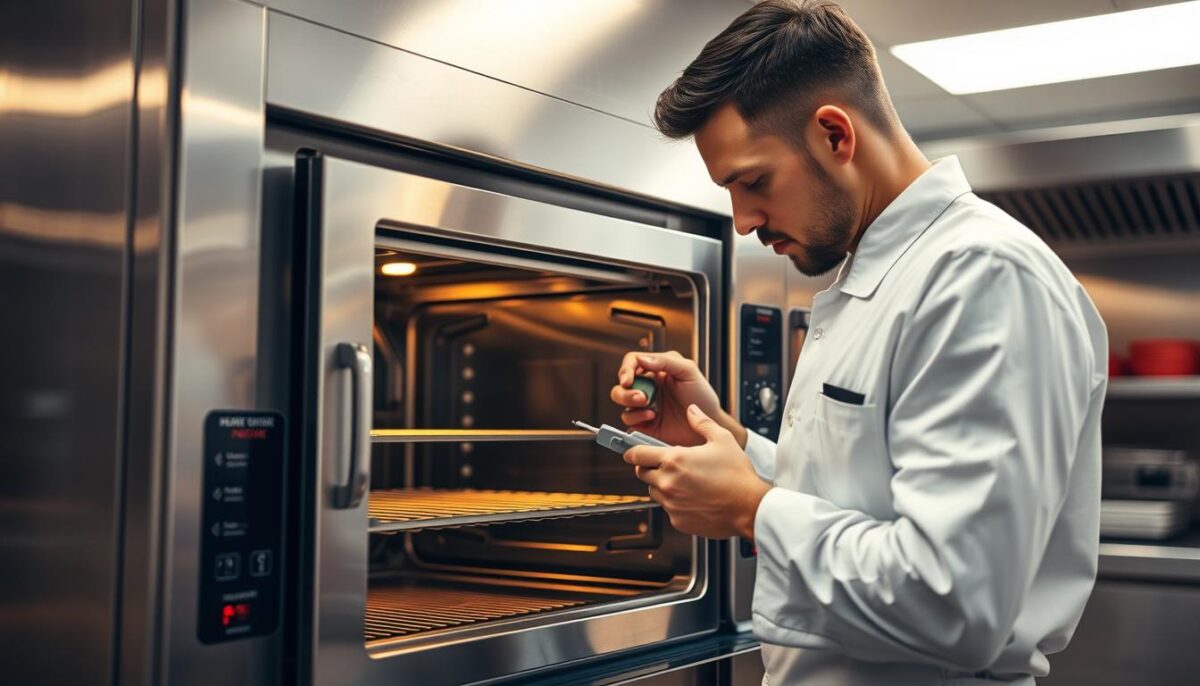
Finding qualified service technicians for gas equipment is crucial, as specialized training is required for proper maintenance and repairs. By understanding these maintenance needs, businesses can make informed decisions about their combi oven choices.
Space Considerations and Kitchen Layout Impact
When designing a commercial kitchen, understanding the spatial implications of combi ovens is crucial. The choice between electric and gas models significantly affects kitchen layout and efficiency.
Footprint and Ventilation Requirements
Electric combi ovens offer greater flexibility in terms of placement due to their simpler installation requirements. They can be positioned almost anywhere with adequate electrical connections and ventilation. In contrast, gas combi ovens require proximity to gas lines and must comply with strict ventilation codes, limiting their placement options.
Installation Flexibility Comparison
Electric models provide more installation flexibility, including countertop configurations, whereas gas models typically require floor-standing installations. The stackability of certain electric models allows for efficient use of vertical space, effectively doubling capacity without increasing the footprint.
| Feature | Electric Combi Oven | Gas Combi Oven |
|---|---|---|
| Installation Flexibility | High | Low |
| Ventilation Requirements | Standard | Strict |
| Configuration Options | Countertop/Floor-standing | Typically Floor-standing |
Top Electric Combi Oven Models for 2025
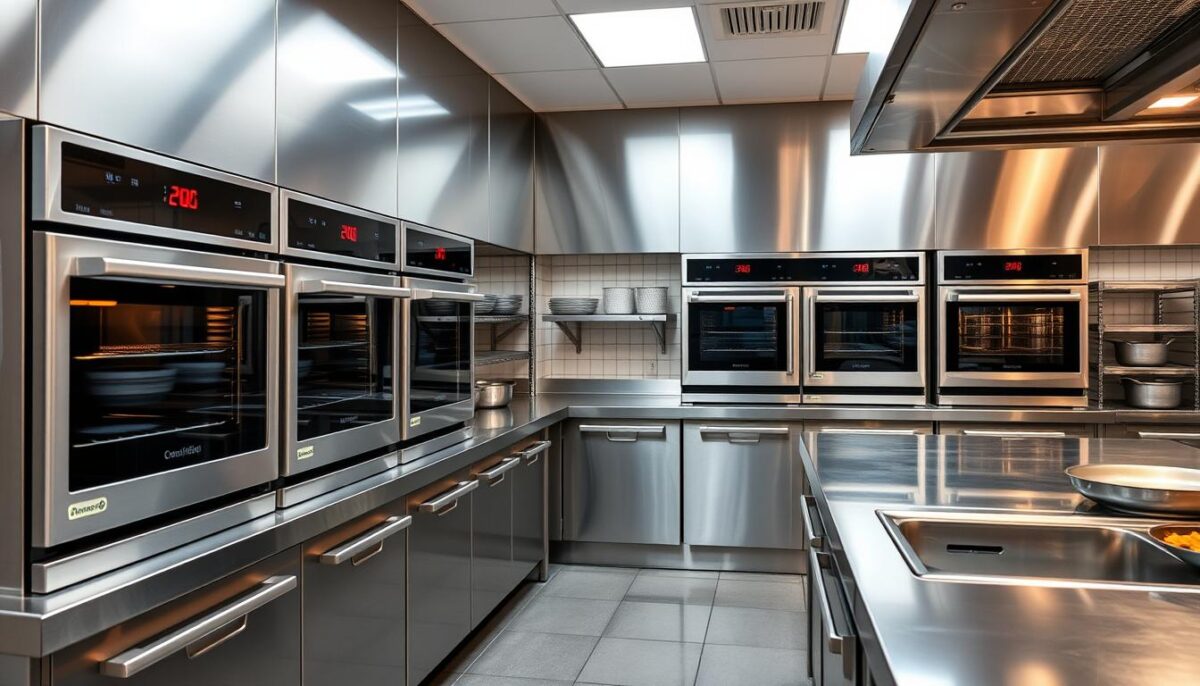
In 2025, top electric combi oven models are setting new standards in culinary excellence. The market now offers a wide range of options to suit different business needs and budgets.
Budget-Friendly Options
The Tecnoeka MKFA Series stands out as a budget-friendly choice, offering essential features at an affordable price. These models are ideal for small to medium-sized businesses looking to upgrade their cooking capabilities without a significant investment.
Mid-Range Solutions
For those seeking a balance between cost and performance, the Unox and Atosa models are noteworthy. They provide advanced features such as precise temperature control and intuitive interfaces, making them suitable for a variety of commercial cooking applications.
Premium Selections
At the high end, Rational’s ICC6-HALF E series and Electrolux models are leading the market. Starting at $11,112 and $10,545 respectively, these premium electric combi ovens come equipped with advanced touchscreen controls, self-cleaning systems, and sophisticated cooking algorithms. They offer precise temperature and humidity control, remote monitoring capabilities, and extensive programming options. Typically, these models include extended warranties and priority service agreements. While shipping is often included, installation may require certified technicians.
The premium models from Rational and Electrolux are particularly notable for their ability to deliver consistent cooking results and simplify complex cooking processes. Their advanced features justify the premium price for many operations, potentially leading to long-term savings through reduced labor costs and extended equipment life.
Leading Gas Combi Oven Models in 2025
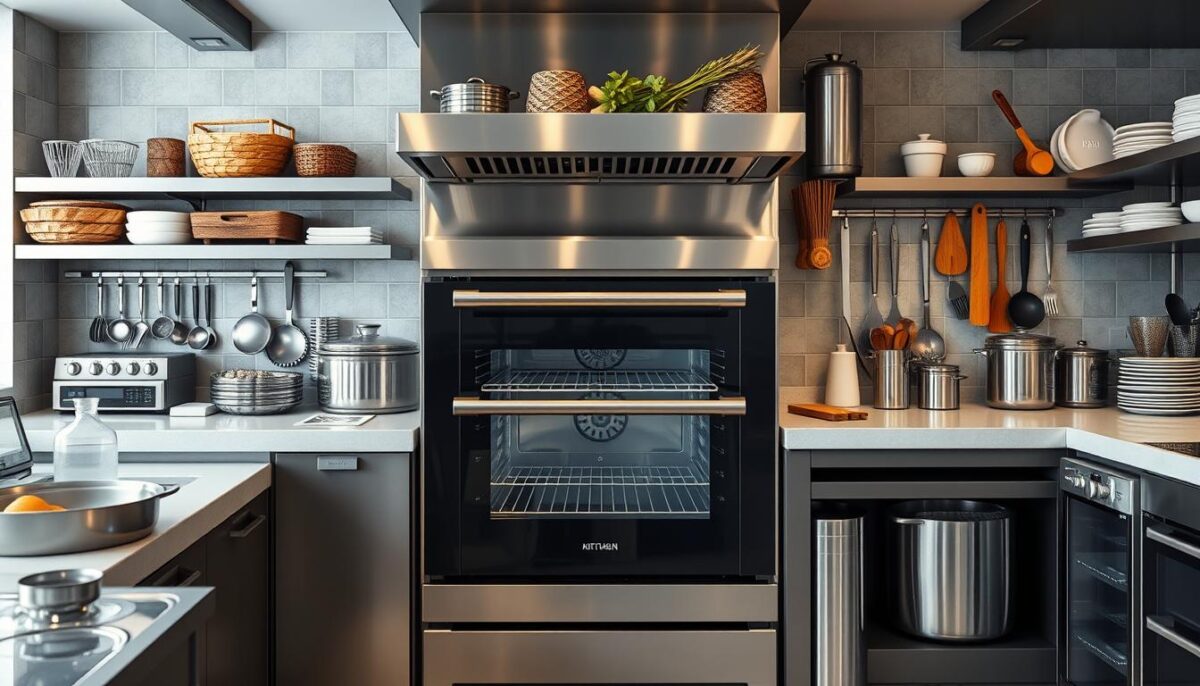
In 2025, top manufacturers are releasing innovative gas combi oven models that are redefining commercial cooking. These advanced appliances offer precise temperature and humidity control, making them ideal for various culinary applications.
Entry-Level Gas Combi Ovens
For businesses looking to upgrade their cooking capabilities without a hefty investment, entry-level gas combi ovens are available. Brands like Tecnoeka offer reliable models with essential features, starting at around $5,000.
Mid-Tier Commercial Gas Options
Mid-tier gas combi ovens, such as those from Unox and Atosa, provide a balance between price and performance. These models, priced between $8,000 and $12,000, offer advanced features like touchscreen controls and improved energy efficiency.
High-End Gas Combi Systems
Premium gas combi ovens from manufacturers like Rational start at $13,248 for half-size models and can exceed $20,000 for full-size units with advanced features. These high-end commercial combi ovens include sophisticated touchscreen controls, self-cleaning systems, and advanced cooking algorithms, offering precise temperature and humidity control despite using gas heat sources.
Business-Specific Considerations for Choosing Between Electric and Gas
When deciding between electric and gas combi ovens, several business-specific factors come into play. Understanding these elements is crucial for making an informed decision that aligns with your business needs.
Restaurant Size and Volume Analysis
The size of your restaurant and the volume of food you prepare are critical factors. Larger establishments with high demand may benefit from the rapid cooking capabilities of gas combi ovens, while smaller kitchens might find electric models sufficient.
Menu Type and Cooking Requirements
Your menu type and cooking requirements also influence the choice. For instance, if your menu involves a lot of steaming or low-temperature cooking, electric combi ovens might be more suitable due to their precise temperature control.
Geographical and Utility Availability Factors
Local utility availability and costs significantly impact combi oven selection. Regional utility rates vary dramatically across the US, with electricity costs ranging from $0.08-$0.22/kWh and natural gas from $0.60-$1.20/therm. Local building codes and ventilation requirements may favor one type over the other, particularly in urban areas with strict emissions regulations.
| Utility | Cost Range |
|---|---|
| Electricity | $0.08-$0.22/kWh |
| Natural Gas | $0.60-$1.20/therm |
Considering these factors will help you make a more informed decision that suits your business needs and kitchen setup.
Conclusion: Making the Most Profitable Choice for Your Business in 2025
The debate between electric and gas combi ovens continues, but the right choice for your business depends on several key factors. When choosing between these two types of combi ovens, consider your specific business needs, utility availability, and long-term operational costs.
Electric models offer lower initial costs and more precise temperature control, while gas models provide faster cooking times and lower operational costs in many regions. Both types can replace multiple pieces of equipment, saving valuable kitchen space. The total cost of ownership should include initial purchase price, installation costs, and operational expenses.
Many suppliers offer free shipping, extended warranties, and financing options to make these investments more manageable. Ultimately, the most profitable choice depends on your business context, including menu, volume, location, and utility rates. By considering these factors and evaluating the cooking performance that best matches your menu requirements, you can make an informed decision that improves food quality, consistency, and efficiency.
FAQ
What are the primary differences between electric and gas combi ovens?
Electric combi ovens use electricity to heat, while gas models use natural gas or propane. Electric models tend to be more energy-efficient, whereas gas models offer faster cooking times and potentially lower operating costs.
How do I determine the right size of convection oven for my kitchen?
Consider the available space, the number of people you’re serving, and the type of cuisine you’re preparing. A larger convection oven may be necessary for high-volume cooking, while a smaller one might suffice for smaller operations.
What are the benefits of using a steam function in my cooking process?
The steam function helps retain moisture in food, promotes even cooking, and can enhance flavors. It’s particularly useful for cooking delicate items like fish or vegetables.
Are there any specific controls or features I should look for in a combi oven?
Look for intuitive controls, precise temperature management, and features like automatic cleaning or programmable cooking cycles. Some models may also offer advanced features like Wi-Fi connectivity or smart cooking algorithms.
How do gas and electric combi ovens differ in terms of energy consumption?
Electric combi ovens tend to be more energy-efficient, especially when used with advanced insulation and smart cooking technologies. Gas models, on the other hand, can be more energy-intensive but may offer faster cooking times.
What are the typical maintenance requirements for combi ovens?
Regular cleaning, checking and replacing worn-out parts, and ensuring proper ventilation are essential for maintaining your combi oven. The frequency of maintenance depends on usage and the model’s design.
Can I install a combi oven in any location within my kitchen?
While combi ovens can be versatile, their installation requires careful consideration of factors like ventilation, electrical or gas supply, and clearance. Consult the manufacturer’s guidelines and a professional installer to ensure a safe and proper installation.
